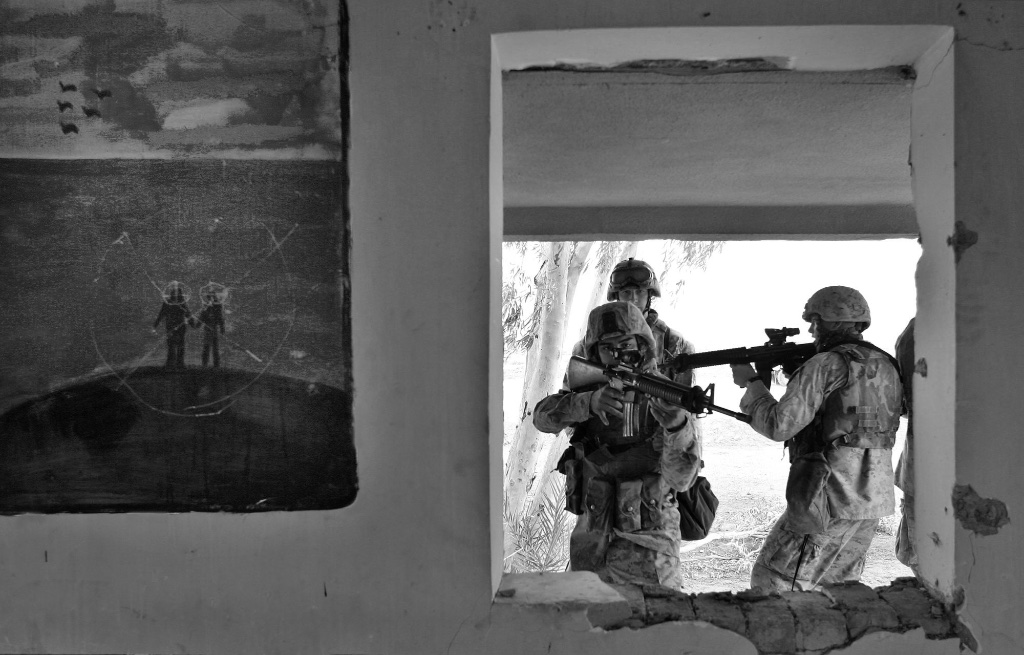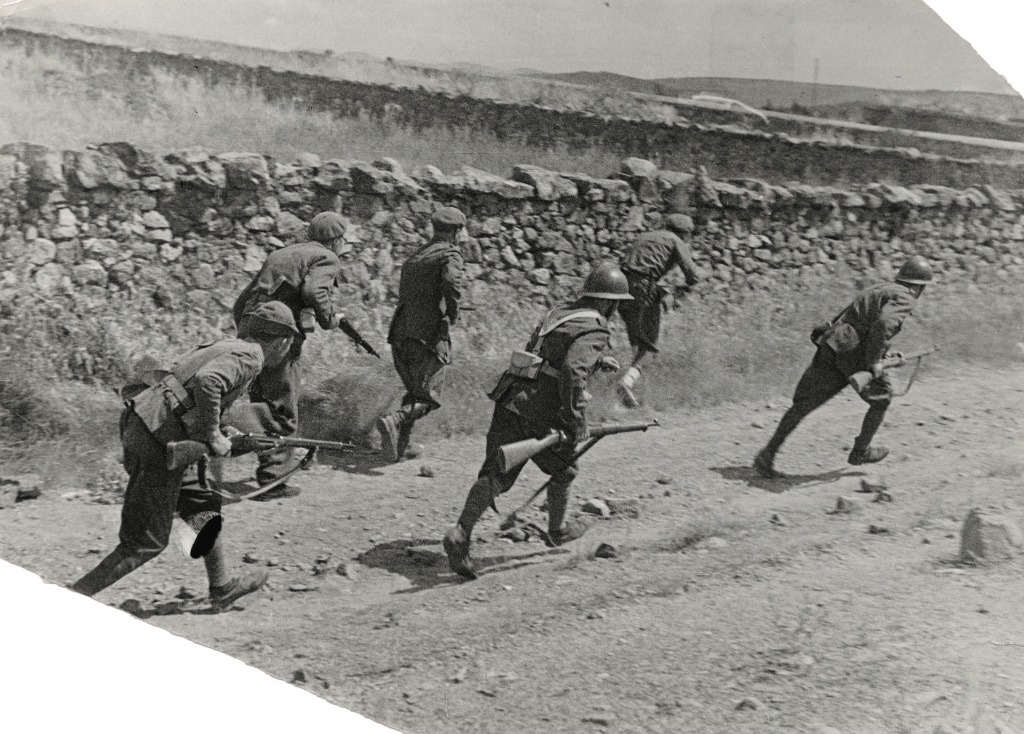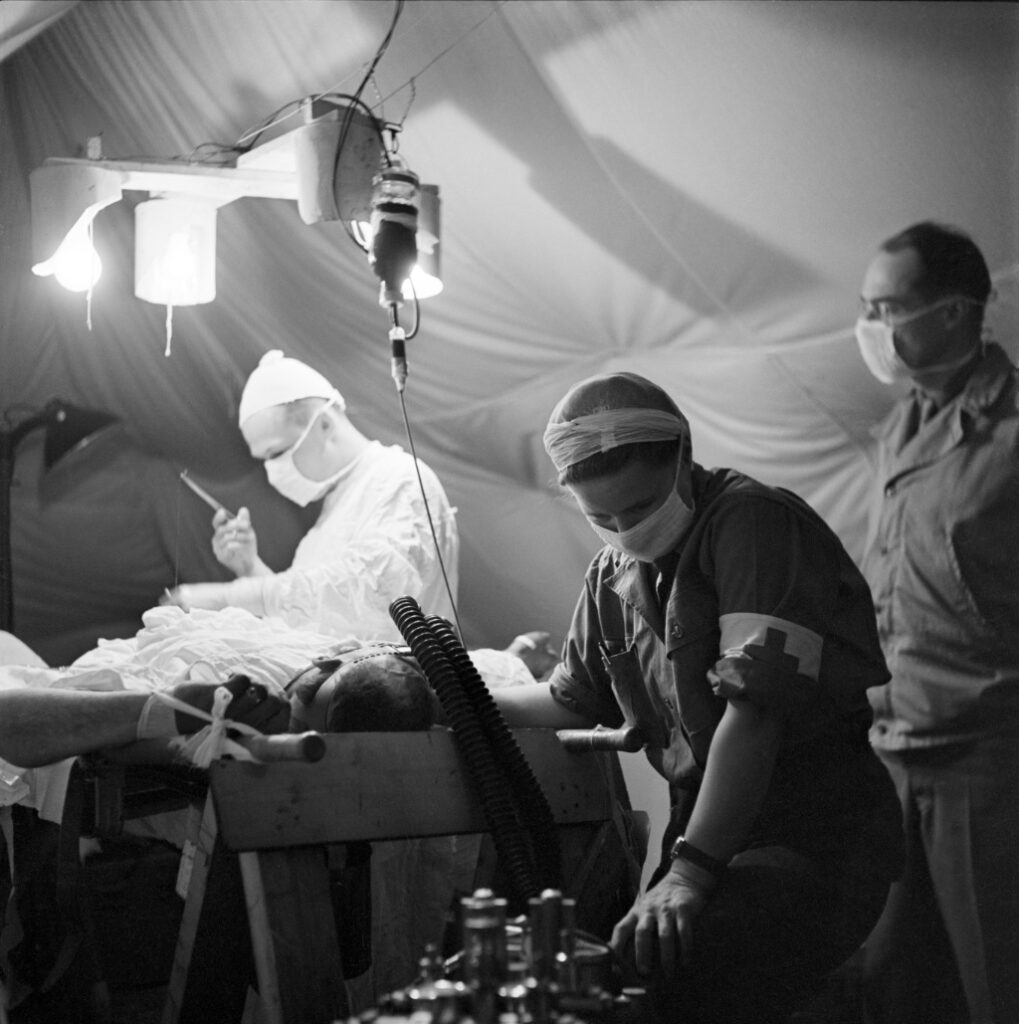
War photographers are mostly portrayed as a macho breed, summed up in the death-defying bravado of Al Rockoff as played by John Malkovich in the movie The Killing Fields, about the genocide in Cambodia, or the frontline action motto of Robert Capa: “If your pictures aren’t good enough, you’re not close enough.”
In fact, many of Capa’s best-known early photos were actually taken by his partner and lover, Gerda Taro. An exhibition at the Musée de la Libération de Paris, running through December, rebalances the story. “Femmes Photographes de Guerre” (“Women War Photographers”) brings together almost 100 pictures by eight women photo-reporters who covered conflicts across Europe, Asia, the Middle East, Africa and Latin America between the 1930s and the first decades of the present century.

Their names read as a roll call of honor: Gerda Taro, Lee Miller, Catherine Leroy, Christine Spengler, Françoise Demulder, Susan Meiselas, Carolyn Cole and Anja Niedringhaus. The wars, massacres and struggles to which they bore witness make up a sobering list: Spain, France, Belgium, Germany, Vietnam, Lebanon, Northern Ireland, Cambodia, Iran, Nicaragua, Salvador, Afghanistan, Iraq, Angola, Cuba, Ethiopia, Liberia, Gaza, Israel, Palestine, Bosnia, Kosovo and Libya.

The images, mostly black-and-white, some in color, are works of reportage and art, lineal descendants of Goya’s famous series “The Disasters of War.” Framed and composed with instinctive skill, they are by turns objective and empathetic, above all strong. They record the slog of the front line, the traumas of wounds and death, the desolation of destroyed worlds, the anguish of wives queuing at the gates of a morgue, and the dazed grief of mourners and survivors. They capture scavengers picking at the deconstructed landscape of a shell-shattered Phnom Penh; the patterned symmetry of ash-covered cadavers head to foot in a Liberian communal grave; the tensile energy of a Nicaraguan guerrilla throwing a Molotov cocktail; two German frauleins sharing a bench amid the baroque folly of bombed-out Cologne.
Some images stand out. One is Taro’s study of a militia girl learning to shoot, down on one knee in fashionable high-heeled brogues, pistol in hand. Then there are Leroy’s portraits of Vernon Wike a young, clean-shaven, lantern-jawed first-aider, in one image desperately calling in help for a stricken G.I. in a Vietnam firefight; years later, we see Wike again as a desert hermit: long-haired, bearded, tattooed and flabby, staring into the distance with lost eyes. Other powerful images include Spengler’s pictures of a laughing Cambodian kid splashing in the Mekong with his friends, using spent shell casings for water wings; in a photo taken later, he is kneeling by the body-bagged corpse of his father.

Behind the viewfinder are women with a wide range of varied backstories. Taro, born Gerta Pohorylle, was a Jewish refugee from Hitler’s Germany. Miller, who improbably presented harsh reality to Vogue magazine’s fashionable readers, was a cosmopolitan New York glamour girl, ex-model and Surrealist artist. Leroy, “la petite Française,” was a Parisian with a taste for adventure and an ability to charm her way into and out of danger. Meiselas, now head of the Magnum Foundation, is an East Coast Ivy Leaguer.
They shared an obsession with presenting the truth of war – the whole truth, nothing but – and a willingness to face the necessary risks and realities intrinsic to that pursuit. If the pictures aren’t good enough, you’re not close enough.
Gerda Taro’s life ended in 1937 when she was crushed by a tank while reporting on the fight against fascism from the frontline of the Spanish Civil War.
Anja Niedringhaus was shot and killed in 2014 by an Islamist policeman in Afghanistan.
These two women book-end the show. Honor to their names.
Favorite